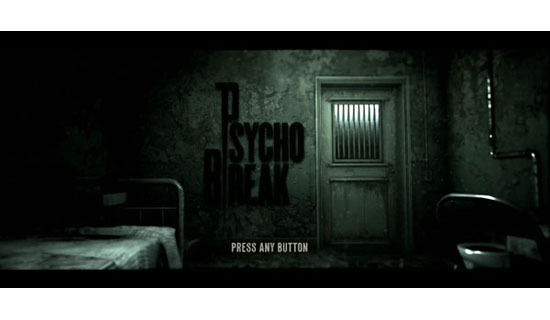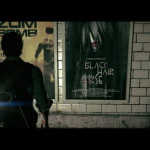Shinji Mikami is a figure in the Japanese game industry who has always been followed very closely. Creating the Resident Evil series relatively early on in his career at Capcom, and then reinventing it twice with the GameCube remake of the first RE and then Resident Evil 4, he has really ended up as the “survival horror guy”. To be fair though, he did have a huge role in creating that genre as it exists today. Yes he directed non-survival horror titles after parting ways with Capcom, but those would really go on to become cult favorites at best. He never seemed to be able to achieve Resident Evil levels of success with any of his other projects. That’s why when it was announced in 2010 that he would be creating his first survival horror game since Resident Evil 4 (known at this time as Project Zwei) with his studio Tango Gameworks, survival horror fans everywhere rejoiced. Not only was Mikami returning to survival horror after spending his time in the action game world, but he said all the right things that old school survivor horror fans wanted to hear. Particularly that modern survival horror games were far too action focused. He wanted to bring back the feeling of struggling to survive. To bring about even further hopes for the title, Tango Gameworks was purchased by Bethesda later on in that same year. This could, in theory at least, provide Tango with a design sensibility that a lot of Western gamers feel that many Japanese developers lack these days.
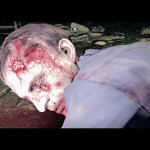 | 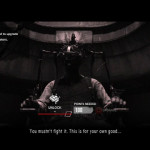 |
| Old Resident Evil fans will recognize this type of first “zombie” encounter turnaround shot… | This terrible contraption is how you upgrade attributes and weapons! |
From the start of when footage of the game itself was revealed, the overall look was nice enough. Things seemed appropriately dark and gritty (perhaps too much so for some), and the lighting was well done when it was very noticeable (leaving the player in a state of low light throughout large portions of the game is practically a survival horror must, after all). It seemed to have that classic Resident Evil 4 perspective that works so well for the genre as well. However as is often the case with games that have incredibly high expectations attached to them, The Evil Within/Psycho Break was bound to falter in some regards. And perhaps the biggest thing in which it is crushed beneath is the weight of its own ambition, in a couple of different ways.
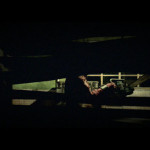 | 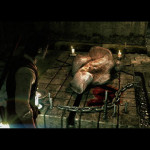 |
| Hiding in lockers from large men with chainsaws is a very big part of the first chapter… | There are puzzles that actually involve placing bloody body bags with live bodies in them on slabs… |
At its core, The Evil Within really tries to be three separate games at different points: Resident Evil 4, Silent Hill and Metal Gear Solid. Stealth is a much larger element here than it is ever been in a Mikami game before, hence the obvious comparison to the Metal Gear Solid series. The overall sense of psychological horror and many chapters where avoidance is your best or only option calls back to the Silent Hill games of old. And of course there certainly are some times where you’re required to just kill waves and waves of enemies, which is so very Resident Evil 4. There is even a chapter that takes place in a mansion, that is a throwback to the original Resident Evil game in both look and feel as well. Up until this point just about every survival horror game was only one of these things, certainly not all! This could in fact be looked at as a very good and progressive take on the genre since it is much less limiting than any of the previously mentioned titles. However it sometimes feels very hard to adjust between those completely distinct feels from chapter to chapter, resulting in some very stunted progress at times. It really gives the impression that Mikami had a case of survival horror ADD when it came to what he wanted to try to do with the game, resulting in a little bit of everything going into it in a disjointed fashion.
Equally as disjointed is the game’s story. The narratives of Mikami’s previous titles have always been rather simple, with not too many psychological elements to them. He obviously sought to change that in The Evil Within, since it can probably be compared far better to a Silent Hill title than any entry in the Resident Evil series when it comes to story. But whereas a Silent Hill story may lead you astray for awhile but ultimately brings things to a sensible head, The Evil Within only gets as far as the leading astray part. While the psychological elements are a welcome addition, they shouldn’t have come at the cost of a coherent story by the time you reach the end. Perhaps David Lynch fans will feel right at home here, but everyone else will likely be left shrugging their shoulders. Even the characters themselves are surprisingly uninteresting and personality free, and seem to only exist as devices to further the incoherent plot. This was much more excusable when the genre was younger, but not as much anymore.
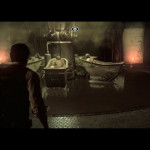 | 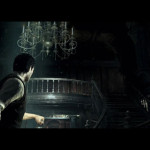 |
| Bathtubs were a very critical part of our weird mind control project! | Welcome to the Spencer Ma…I mean, some random mansion! |
Unfortunately even the Playstation 4 and XBox One versions of this game have their share of technical issues. Most of these issues manifest themselves as seemingly random drops in frame rate and occasional pop-in and general freezing of the game. It never seems to occur to the point of making the game feel unplayable though, so it will only cause minor annoyance for those who have some patience for technical imperfections.
While that seems like a lot of complaints, I still enjoyed my time with this game. This is still the survival horror genre after all, and it still feels okay to get a game that has plenty of imperfections, even after all this time. The game play itself is quite good, with all of the various guns and even melee attacks feeling like they should. The upgrade system is implemented in a very Bethesda-like way, and you are given enough points to feel like you are making good progress with your upgrades, and often they do feel like they make a significant difference (even though the main character can’t even run for as long as a sickly old man until you upgrade that ability a bit). The difficulty level is just about right on Survival mode (which is the highest one you can play initially), though you should still expect to die more times than seems reasonable. And despite the convoluted story, the overall feel of the game remains tense and eerie, always keeping you on edge. The Japanese version features both Japanese and English voices, neither one clearly superior to the other as they both fall somewhere between bad and mediocre (Again, something that you almost come to expect out of the genre at this point). DLC that comes free with the game is also required to unlock full gore in the Japanese version (a clever way to get around those tyrants at CERO), and further story. Speaking of DLC, three very hefty pieces of it were released in 2015: The Assignment, The Consequence, and The Executioner.
The Assignment and The Consequence are very similar in feel, and both focus on Juli Kidman, partner to main character Sebastian Castellanos. Since Kidman was involved in various points of the main game’s story, these two DLC packs fill in a lot of details about just what exactly is going on. And I hope you like the stealth aspects of The Evil Within, because Kidman will be doing a lot of sneaking and puzzle solving, but not much shooting! She has a flashlight for much of the time, and it’s used as key to solving puzzles and being able to open the various safes (which contain collectibles) by shining them on the wall to reveal combinations (which are randomly generated, so you can’t just look them up). It can be just as frustrating here as it was in the main game, especially with some of the pretty awful boss designs. If you thought that the main game has way too many instant kill situations (and it does), you won’t be getting away from that here. A few invisible enemies even make their return, adding to the horrible design decisions.
To counter some of the frustration though, this content is not afraid to be completely silly. One of the collectibles that you can find are within snails that melt when you focus your flashlight on them. But when you do, they moan and emit hearts. There’s also a very weird scene that you can easily miss with some enemies (including a boss) having a dance party, which you can view through a hole in the wall. It’s a great value in terms of length of play for the money, and it does a good job of better explaining the confusing story. Your enjoyment of it will definitely vary depending on how much you enjoy the stealth portions though.
The Executioner is the truly unique DLC pack among these. Here you play as the safe-headed Keeper boss from the main game, in a first-person combat-oriented experience. While you’ll be fighting a decent amount of very easy regular enemies, the highlight here is being able to fight some of the other major bosses from the main game in a completely new way. Whether you’re using your axe or any of the other weapons that can be purchased and upgraded with the currency you earn throughout the levels, it’s like nothing you’ve played in the main game or previous DLC packs. I was pretty leary of this at first, but quickly got into the swing of things despite the first person view. While I didn’t think that the last boss really felt like it belonged in with everything else, this was my favorite of all the DLC.
The thing that I loved about the early Resident Evil games is that there was a very clear flow to them. They were very difficult at first, but once you got it, you really got it. I’m sure that one could fall into that same groove with The Evil Within as well, but given the length and variation of play styles in the game, I think it would take a lot longer. There may not be much here for those who are not in the market for a survival horror game with an emphasis on survival. But for those of us who still look back fondly on the genre’s heyday, this new entry is well worth checking out despite its flaws as a game of its time.
